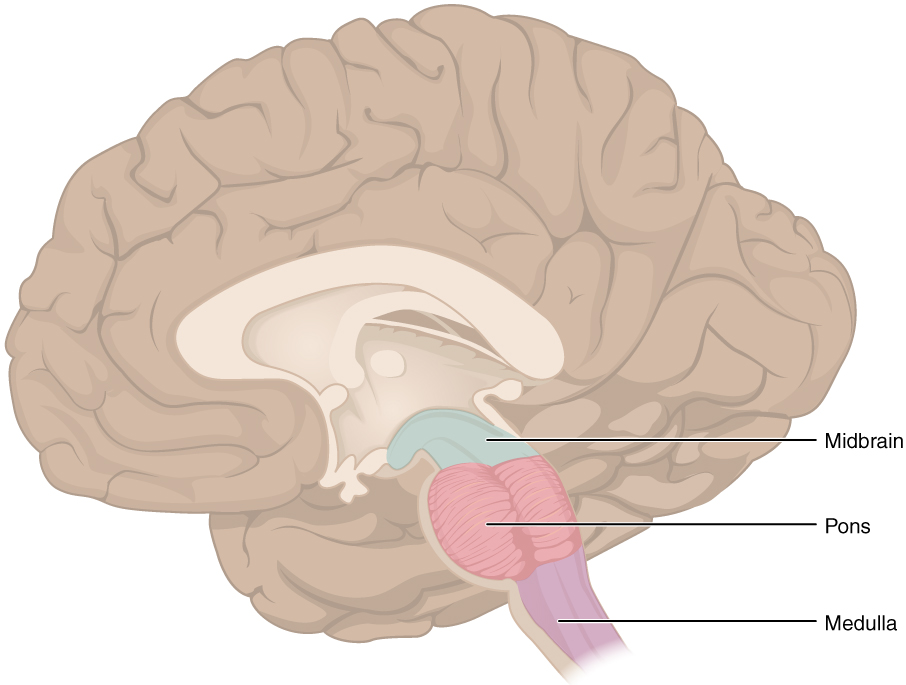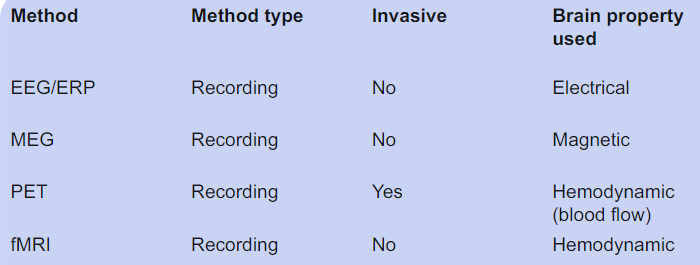Week 11+12 - Neuroanatomy (& Neurophysiology)/ DIVA MODEL
1/36
Earn XP
Description and Tags
FINAL EXAM https://create.kahoot.it/share/neuroanatomy-2024/e44d9387-15df-4cd5-a249-f4d75644d66a
Name | Mastery | Learn | Test | Matching | Spaced |
|---|
No study sessions yet.
37 Terms
How’s the nervous system (CNS) divided into?
Central nervous system
Encased in bone
Cerebral cortex, cerebellum, thalamus, basal ganglia, brainstem and spinal cord
Made of neurons (transmit information) and glial cells (support neuron function)
Peripheral nervous system
Serve peripheral body
Cranial nerves - serve head and neck
Spinal nerves - serve the rest of the body
Explain the different steps occuring in the Nervous System
External vs Internal receptors
The sensory division
Information processing
The motor division (two systems)
Effectors

Overview of the nervous system


How are neurons supported & how do they communicate?
Neurons supported by glial cells (store information in long term memory) and astrocytes (help the development of synapses)
Neurons communicate through synapse by means of neurotransmitter substance

How are neurons active?
Excitation: increases their firing rate
Inhibition: decreases their firing rate

What are the parts of the brain
Forebrain
Cerebellum
Brain stem
Spinal cord

General structure of each brain parts
Forebrain
Cerebrum
Subcortical structures
Cerebellum
Brain stem
midbrain, pons, medulla, cranial nerves
Spinal cord

Forebrain: Characterisitcs of the Cerebrum
Outside layer of brain
Consists of two hemispheres and corpus collosum (connects the two hemispheres)
Divided by longitudinal fissure
Sulci & gyri
Forebrain: What are the Five lobes?
Frontal, Temporal, Parietal and Occipital
Forebrain: What does the Subcortical structures contain & their functions?:
Basal ganglia: movement & movement patterns
Subthalamus: motor funtions
Thalamus: most sensory information
Hypothalamus: Bodily functions, link the nervous system to the endocrine (“hormone”) system
Limbic system:
Amygdala: emotional regulation
Hippocampus: learning, memory
Characteristic of the Cerebellum
Largest component of hindbrain
High Neuron density (around 80% of brain’s neurons)
What does the Brain stem consist of?
Midbrain
Pons
Medulla
12 cranial nerves

Brain stem: Cranial nerves levels
Nerves I-IV: midbrain level
Nerves V-VIII: pons level
Nerves IX-XII: medulla level

What are the 12 cranial nerves?
Olfactory: sense of smell
Optic: visual information
Oculomotor: Innervation for eye movement
Trochlear: Innervation for eye movement
Trigeminal: Sensory information in parts of face and tongue, chewing
Abducens: Movement of eyeball
Facial: Innervates muscles of facial expression & Sensory component for part of tongue
Vestibulocochlear: Mediates auditory and vestibular (gravity, balance...) sensation
Glossopharyngeal: Somatic sense from tongue and pharynx & Upper pharynx reflexes
Vagus: Autonomic function & Somatic motor innervation
Accessory: Collaborates with the vagus nerve to innervate the intrinsic muscles of the larynx
Hypoglossal: Innervates the muscles of the tongue
What does the Spinal cord contain?
31 pairs of spinal nerves
What’s Apraxia of speech/ verbal apraxia
difficulty in planning certain speech sounds
COMMON LANGUAGE IMPAIRMENTS
What’s Dysarthria?
causing difficulty pronouncing phonemes
What’s Oral dyspraxia vs Verbal dyspraxia?
Oral dyspraxia: deficit in programming articulators for non-speech sounds
Verbal dyspraxia: deficit in programming articulators for speech production, phoneme substitution errors, but good comprehension
What’s Dysgraphia?
failure to use visual and motor feedback
Whats’s Developmental language disorder?
problems with language development in children
What’s Dyslexia?
difficulty mapping sounds to written language and reading difficulties
What’s Aphasia?
general language impairment due to lesion/ stroke
What’s Broca’s aphasia?
difficulty in speech production
broca: inferior frontal gyrus
What’s Wenicke’s aphasia?
syntax maintained, but meaning/ content is irregular
- Wernicke: Superior temporal gyrus
What’s Global aphasia?
both expressive and receptive abilities are severely impaired
What are causes of language impairments?
Acquired brain injuries
covers all situations in which brain injury has occurred since birth, and includes Traumatic Brain Injury (TBI) as well as tumour, stroke, brain haemorrhage and encephalitis...
Traumatic brain injury
Is an acquired brain injury
Motor vehicle accidents -> brain slams against the inside of the skull
Mild traumatic brain injury
Repeated head traumas
Concussions
Degenerative diseases
Amyotrophic lateral sclerosis (ALS)
Parkinson’s disease
Huntington’s disease
Myasthenia gravis (MG)
Bell’s pals
Imaging methods used in cognitive neuroscience
EEG/ERP
MEG
PET
fMRI

Behavioural methods used in cognitive science

DIVA MODEL
What’s conventional feedback vs feed-forward?
Conventional feedback is past focused. It provides information about past activity and performance.
Feed-forward is future focused. It provides information about what a person could do differently in the future.
How does the DIVE model work?
The speech sound map of the premotor cortex controls the articulator velocity and position maps (lower left) which, in turn, control the muscles of speech.
The output of the cortex is fed to somatosensory and auditory error-map regions responsible for monitoring the accuracy of production based on the proposed plan produced at the premotor cortex.
The error monitoring system serve as feedback control, which modifies the output over time during learning stages.
What happens eventually?
the feedforward control has been modified sufficiently that feedback is no longer critically essential until a perturbation occurs in the system → that requires error correction again (-> feedback loop)
Such a perturbation could be:
anesthesia from dental work
or inserting a tube into the mouth (see lip tube experiments)
to a swollen lip or tongue
to motor disturbance arising from neuromuscular disease.
or simply an experiment where the auditory feedback is altered (phonetic experiments)
For normal speech the feedback loop is turned off (otherwise speech production would be too slow) → only activated when necessary (i.e. perturbation occurs)
What’s the general requirements for a speech model?
Feedback:
Auditory information (hearing your own voice and determine
how exact targets have been reached)Tactile and kinesthetic feedback (how accurately your
production was achieved in articulation (e.g. collision control or
precision of closure/narrow channel for plosive vs. fricative)External sources (e.g. frown on someone’s face if he did not
understand)
DIVA model contains mirror neurons model to match production to perception (a “model” of the desired speech sound is sent from the
premotor cortex to the perceptual regions) → if mirror neuron “model”
does not correspond to achieved acoustic output of the muscle model
then muscle model is modified in the next trials → but this concept is
still highly disputed
DIVA model: Stuttering
It takes 75 to 150 ms for auditory information to reach the
cerebral cortex → that is too long to produce fluent running speech (e.g. an unstressed syllable is often only 100 ms long)So we have to disable the feedback loop for faster speech → that is the reason why we speak slower when learning new languages (learning process) → dysfluency very similar to stuttering can be achieved when we do not disable the feedback part of the model and increase the speech rate
→ in other words, in stuttering the feedback part of the model cannot be turned off, causing interference between the continuous auditory feedback and the motor planning for the following phonemes
DIVA model: Locked-in syndrome
Sensors have been implanted in the model-appropriate regions of a young patient with locked-in syndrome (following a stroke after traumatic brain injury)
The researchers first identified the area of the patient’s brain that was active when the patient imagined himself speaking → these regions are likely to be involved in the active production of speech
They then implemented a “neural prosthesis” that could read activity in these regions
These activations run a speech synthesizer based on the specific phonemes the patient is thinking of producing
This DIVA-human combination can now successfully and consistently produce three vowels